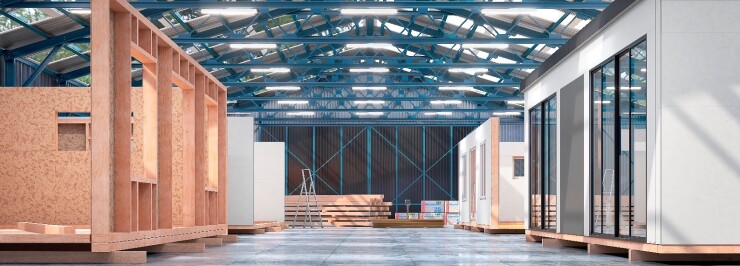Manufactured housing was introduced in Japan after World War II to address a rising population coupled with a shortfall of 4.2 million homes. Today, manufactured houses, also referred to as “prefab,” “modular” or “factory-built” dwellings,
By contrast, the perception of manufactured housing in the U.S. has traditionally been that of an option that’s neither resilient nor energy-efficient and may sacrifice design and customization for lower entry cost. Maybe it’s time to reframe the narrative.
Modern manufactured housing can be built to a customizable aesthetic that balances form and function and uses smart technology. It can also be built faster and more efficiently than site-built homes, is environmentally friendly because it minimizes construction waste, and can incorporate existing energy-efficient features and anticipate future ones. This segment of the industry has the potential to help address housing supply issues while appealing to first-time homebuyers including millennials, who currently make up
How can the industry spur homebuyers to embrace this forward-thinking style of home and seek relevant funding to purchase one?
Is This the Emerging Future of Manufactured Housing in the U.S.?
According to
Meanwhile, a few new boutique companies in the U.S. are making headlines with proposed fresh takes on manufactured housing designed to appeal to a wider swath of homebuyers.
Homma is targeting millennials with its middle-to-high-end offerings inspired by Japanese manufactured houses; it is joined by the self-described “premium prefab” bluhomes in San Francisco and New York’s “modern modular”-focused Resolution: 4 Architecture.
The New Generation of Prefab Offers Innovative and Attractive Features
Existing U.S. manufactured housing companies are already offering, evolving, and improving interesting features to attract homebuyers. However, this latest approach, whose overarching influence reflects Japanese sensibility, is still in its infancy. Lenders and other housing professionals can help dispel misperceptions around manufactured homes by helping current and future borrowers understand their unique benefits and innovations, including*:
- Customization: The large amount of different modular components created in factories is designed to be interchangeable, allowing homebuyers to meet individual and family needs. Buyer input is integral throughout every step of the process, boosting a vested interest in what researchers behind a
Harvard Business School study dubbed the IKEA effect, a cognitive bias through which consumers place a disproportionately high value on products they helped to create. In addition, these homes can often be expanded, or walls removed or added, as family size and house requirements change. - Modern aesthetics: Minimalist design, clean lines, geometric shapes, recycled and natural materials including sustainable hardwoods, and enhanced use of natural light through large and ample windows and skylights are hallmarks of Japanese prefab homes. This style of dwelling can be very appealing to many U.S. homebuyers, including those who eschew traditional design and amenities.
- Smart technology: Automation installed during the construction process and managed with smartphone apps can make daily tasks seamless and effortless. Features range from speakers, lights, and thermostats controlled from anywhere in the house (or even remotely), to appliances that simplify and expedite cooking and grocery shopping, to showers that retain each family member’s perfect setting.
- Energy efficiency: The open floor plans and energy-efficient windows, doors, walls, insulation, and other materials make these homes easy to heat and cool. They also often take advantage of naturally generated energy through solar electric, photovoltaic (PV) and solar water-heating systems and geothermal heat pumps.
- Sustainability and environmental impact: The National Association of Home Builders (NAHB) estimates that around
8,000 pounds of waste are produced from construction of a 2,000-square-foot site-built home. By contrast, due to advanced technology, manufacturing processes and onsite reuse and recycling, constructing manufactured houses produce far less waste—about the amount that can fit into a 55-gallon trashcan. This is an especially important consideration for younger homebuyers, who value environmental responsibility and leaving a low carbon footprint.
Modern manufactured houses have the potential to become an attractive, energy-efficient, and comfortable solution for many homebuyers—just as they have in Japan and other countries including Sweden, Australia, and Germany. As this category continues to grow and evolve, Freddie Mac is committed to providing the education and resources for borrowers who may find it a relevant option for sustainable homeownership. Learn more about







